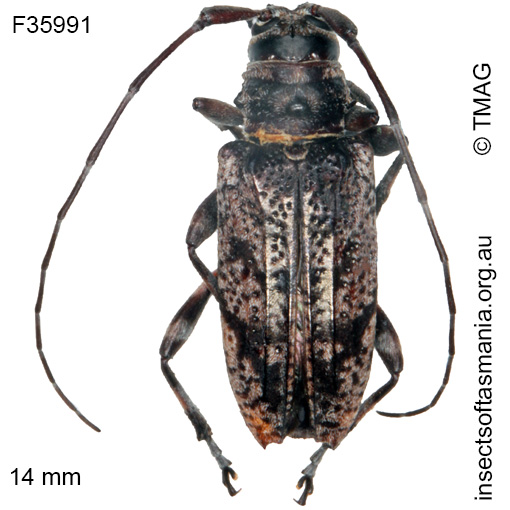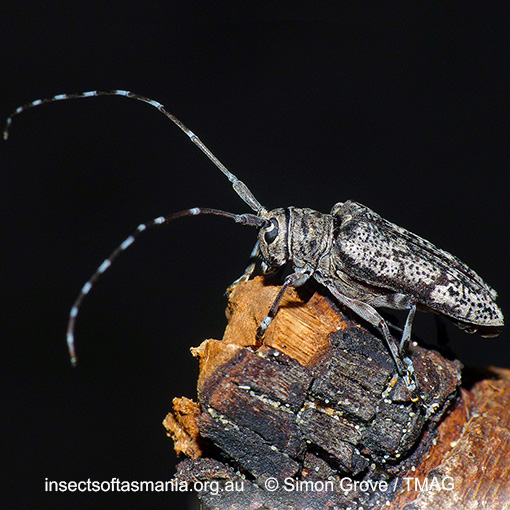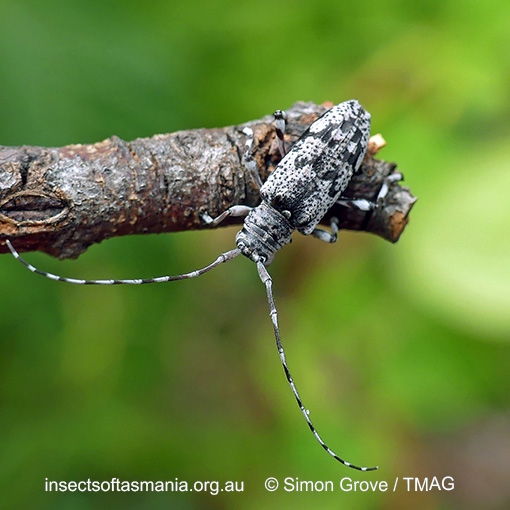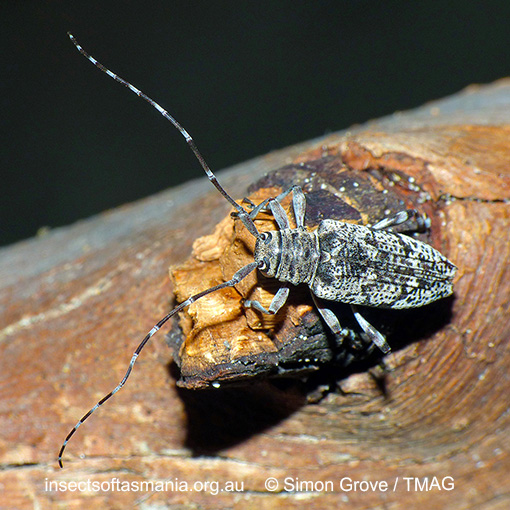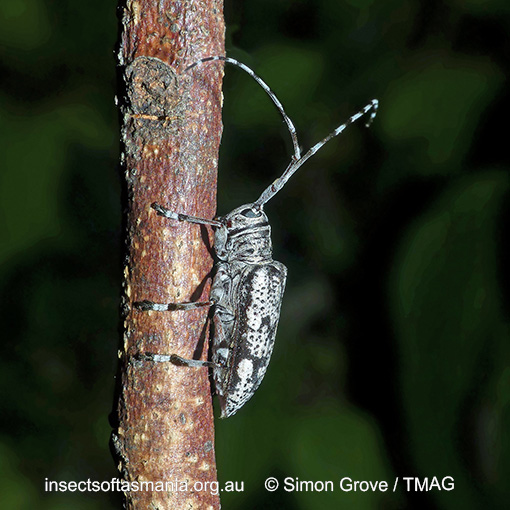
Disterna canosa
Basis for Tasmanian occurrence
TMAG collections
Classification
Suborder: Polyphaga
Superfamily: Chrysomeloidea
Family: Cerambycidae
Subfamily: Lamiinae
Tribe: Zygocerini
Morphology
Flightedness: winged and assumed capable of flight
Source literature on morphology and taxonomy (*primary taxonomic source, where identified):
*Erichson, W.F. (1842). Beitrag zur Insecten-Fauna von Vandiemensland, mit besonderer Beruecksichtung der geographischen Verbreitung der Insecten. Nicolai’schen Buchhandlung 8(1): 379 pages.
Ślipiński, A. & Escalona, H. (2013). Australian longhorn beetles (Coleoptea: Cerambycidae), Volume 1: Introduction and Subfamily Lamiinae. CSIRO publishing, 504 pp.
Ecology
Association with dead wood or old trees: obligately saproxylic
Ecological attributes: — Acacia melanoxylon is a host-plant (Bashford, 1990a) — Eucalyptus obliqua is a host-plant (Bashford, 1990a) — Pinus radiata is a host-plant (Bashford, 1990a).
Collection method(s) for TMAG material: — Baited trapping (funnel trap) — Hand collection (substrate not specified) — Malaise trapping — Not specified — Pipe trapping — Rearing in insectary (host not documented) — Rearing in insectary from Eucalyptus amygdalina — Trapping using a range of devices placed in crown of Eucalyptus obliqua (Bar-Ness, 2005) — Vane trapping.
Source ecological literature:
Bar-Ness, Y. (2005). Crown structure and the canopy arthropod biodiversity of 100 year old and old-growth Tasmanian Eucalyptus obliqua. Msc thesis, Univ. of Tasmania, Hobart.
Bashford, R. (1990a). Tasmanian forest insects and their host plants: records from the Tasmanian Forestry Commission insect collection. Hobart: Tas. Forestry Commission, 32 pages.
